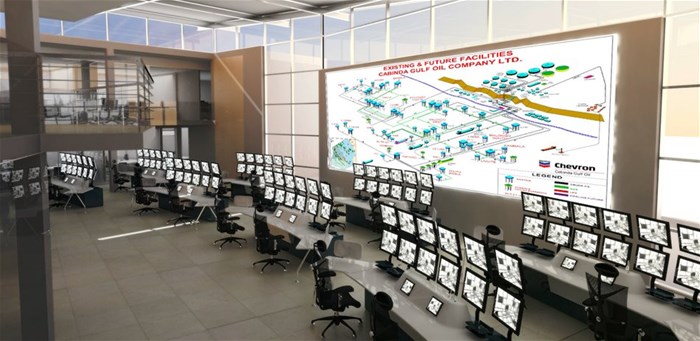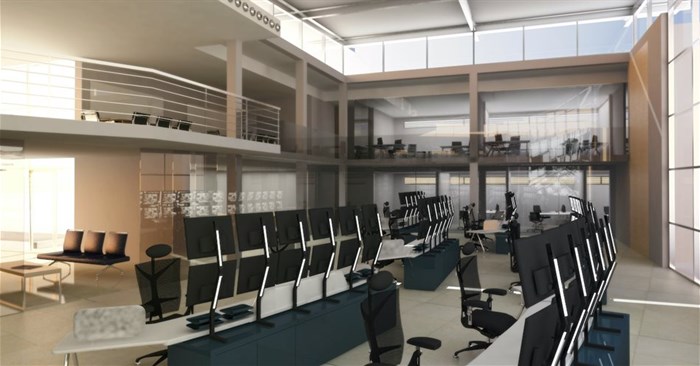As much as technology is constantly evolving and changing the face of industry, so the need for thoughtfully designed human-led and human-oriented spaces continues - and this includes the control room. From shopping centres to factories and environments that involve trains, planes, automobiles (and ships), control rooms are vital organs in a body of pivotal parts functioning both as independent units and in unison.
Control rooms are vital command stations, allowing for centralised access to monitor and supervise environments, processes and people, to improve and optimise production functionality, and allow for safety and emergency response functions. Since control rooms are a centralised hub for monitoring, data-based learnings are inevitable, which can allow for more streamlined process improvement and problem solving. From a regulatory perspective, control rooms are equally essential in maintaining suitable standards of safety and environmental impact in specific milieus. In industrial facilities, the control room is the undisputed mainstay, allowing for the integration of a variety of systems, technologies and equipment in one vital space.
Phillip Wyatt, project director at Inhouse Design Studio, is an expert in this field, having worked on on-shore power stations across South Africa, an off-shore oil platforms off the coast of Angola, and most recently designing the control room for Unitrans, a leading logistics company operating in South Africa and across Africa. The project involves the design of a centralised facility that will accommodate the various key elements that allow monitoring of their extensive fleet of vehicles.
Phillip says there are key factors he and his team incorporate when designing a space of this magnitude. “From a practical viewpoint, we need to take both the people and the processes into consideration. We need to provide adequate space so that operators can move around and perform tasks efficiently. Workstations need to be ergonomically designed to allow for safe and comfortable movement in the space and displays have to be positioned so they are comfortably visible, with minimal glare. These are just some of the basic conditions we need to get right from the get-go.”
Other factors – such as ensuring lighting is consistent during a 24-hour cycle, that the space is appropriately barriered against noise distractions, that there is adequate ventilation, and that temperature and humidity levels can be monitored – are also part of the 'first layer' of design. Additionally, adequately designed staff support spaces such as canteens, rest spaces and bathroom facilities are also part of the control room design scenario.
Up for the task: task-specific design
Once the initial design demands of the control room have been addressed, it is time for the team to delve into the specific needs of the space. Task-specific considerations such as appropriate desktop and overhead monitor displays, monitor resolution, as well as mounting and adjustability need to be resolved.
“We need to drill down into factors such as whether operators need to monitor multiple systems simultaneously, as this would mean we would need to provide multiple displays arranged ergonomically to minimise excessive head or eye movement. We also need to consider the heat generated by equipment and ensure proper cooling and adequate ventilation systems are included in the design,” explains Phillip.
“In the ideal control room there needs to be appropriate floor space for comfortable task completion, workspaces need to be task-specific with sufficient consideration for operators, equipment and necessary reference materials. Above all, we need to focus on creating streamlined, high-functioning, clutter-free spaces that allow operators to focus on their tasks with minimal distraction and obstructions.”
Smart tech considerations: tech leads the charge in control room design
Technological advances are a happy advantage in the 21st century control room design landscape. Phillip and the Inhouse Design team are experts in harnessing the best smart tech to design optimal functioning control room hubs. Some of the elements consistently used include designing an embedded Sensor Networks System to monitor and gather real-time data from various equipment, processes, and environmental parameters. These monitor variables such as temperature, pressure, humidity, energy consumption, and equipment status and allow for automated and manual adjustments when necessary.
A robust network of data infrastructure, capable of handling the data flow from Internet of Things (IoT) Integration is a non-negotiable in efficient control rooms, explains Phillip. “This includes reliable connectivity, sufficient bandwidth, and data security measures. Additionally, it is essential to implement data visualisation tools and dashboards to present real-time data in a user-friendly and visually appealing manner. Operators can monitor and analyse data trends, anomalies, and key performance indicators (KPIs) to make informed decisions.”
Other smart tech design elements in high-functioning control rooms include:
- Integrated advanced analytics tools to be able to process and analyse large volumes of data generated by control room systems. This enables operators to gain insights, detect patterns, and optimise processes.
- Machine-learning algorithms that can predict equipment failures and schedule maintenance activities proactively. By analysing data patterns and equipment performance, operators can identify potential issues before they lead to unplanned downtime.
- Integrated touchscreen displays and interfaces that allow operators to interact with control systems and perform tasks.
While there is no denying that smart tech is now a critical element of designing high functioning control rooms, one cannot overlook just how crucial the operators and technology experts are in this process.
“We work closely with the operators themselves, designing around their specific operational requirements, their 24-hour cycle workflows, and the goals of the control room, and tailor the space to the unique needs of the industry and organisation so that room for human error in the space is eliminated,” says Phillip. This also means that we look to regular feedback and usability testing to allow for continuous improvement and optimising. This is both the challenge and the beauty of control room design. We work within the tightest parameters possible, and for a design professional the results are exquisitely near-perfect – they have to be.”



































